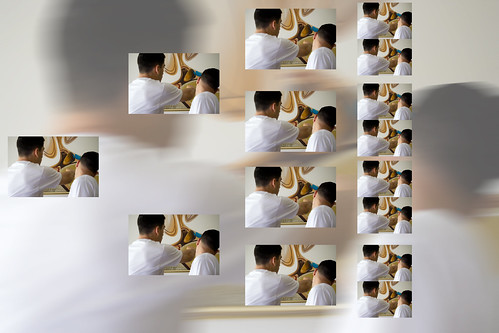Top 200 Photos: #164
Today’s Top 200 Photos.
Just like the reflection of love photos, this was born of a boring weekend in Maryland. Danielle wanted to try some photographic ideas. She was partially inspired by a photo shoot she’d recently seen with Quentin Tarantino, but when those photos didn’t really come through, we went for some herion chic photos. The effect from the blinds started off as an accident, but ended up being something we really liked and tweaked to get just right.
Top 200 Photos: #165
Brooklyn and our nation’s birthday for today’s Top 200 Photos.
For a few years, until the younger batch of the next generation was born, Megan was the only kid to take photos of. The funny thing is that she was really scared of me so I usually had to sneak a shot. This is when she was getting old enough not to be scared of me. I wonder what used to scared her?
Top 200 Photos: #166
From NYC to our nation’s Capital for today’s Top 200 Photo.
As I mentioned before, we loved to go to the National Zoo to go see the Pandas. Well, thanks to Tai Shan, the zoo got a huge injection of donations which it used to revitalize its Asian section of the zoo. Eventually they got a pair of fire foxes. The fire fox is also known as the red panda. Back when we were in college I was visiting Danielle during summer classes and we took a trip to Syracuse. While there we went to the zoo. I saw they had a sign for a red panda. Whoa! I only knew about the black and white ones! I was quite annoyed that it was just some raccoon-looking thing.
Top 200 Photos: #167
Back once again to NYC for today’s Top 200 Photo.
Since I have family (in-laws) in NYC, I’ve tried, on occasion, to take my brothers to experience parts of NYC that we never got to see in the brief time my family rolled through before. On this trip, Dave got to ride a NYC subway for the first time.
Top 200 Photos: #168
A bird in this Top 200 Photo.
This is one of my best bird photos both from a subject standpoint and a technical standpoint. Birds are exceptionally hard to photograph. All animals are hard as they’re more unpredictable than humans, but birds are exceptionally frantic. It’s probably partly because they have a few predators and partly because they need to constantly eat because of their high metabolisms. So it’s hard to capture a bird tack sharp like this one. It’s made a little harder by the fact that my camera’s old so I can’t boost the ISO high enough to get a nice, fast shutter speed.
Top 200 Photos: #169
This Top 200 Photo was taken at the beach.
Alex would, at least in 2009, try and get right up in front of the camera if he noticed you taking a photo. It could spoil the photo you were trying to get a candid shot of, but it certainly made for a dynamic spontaneity that’s harder to capture as kids get older and self-conscious of their image.
Top 200 Photos: #170
To technology for this entry in Top 200 Photos.
In 2008 Danielle was going to take a business trip and wanted a light laptop. Well, she was in luck because netbooks had just recently come out and we were able to get the EEE PC for around $300. We’ve been able to use it a lot for trips so we could watch different things or if we didn’t want the weight of my laptop. I’m not 100% sure it was worth all the money given how quickly the netbooks gained beefier hardware, but it was certainly fun to be part of the revolution in computing.
Top 200 Photos: #171
A political entry for today’s Top 200 Photo.
In the summer of 2006 Israel and Lebanon were engaged in an ever-escalating war. For the most part, I feel that violence is often not the best answer to violence. Especially wide-scale violence. It may be the case that some individuals deserve death for their actions - killing others, especially on a large scale - but retaliations on the country level tend to cause both sides to escalate. This photo/art piece is just meant to showcase how violence quickly gets out of hand.
Top 200 Photos:#172
Back to Cornell for today’s Top 200 Photo.
Slope Day is an annual day of debauchery at Cornell, taking place on the last day of classes. Slope Day has gone through quite a few evolutions. This photo was taken in 2002, my freshman year, which was the last year in which Slope Day was a free-for-all day of drinking. I’m not sure why Cornell went back to a structured festival the following year (as it apparently had done way back in the day), but I think it probably had to do with the emergence of digital cameras and nascent social networking sites that were giving the University a bad reputation. Additionally, a few Ithaca High School kids died of alcohol poisoning. While I feel this wasn’t Cornell’s responsibility since Slope Day was not an official school function, apparently they felt differently. I had mixed feelings about what it evolved to. On the one hand, they started inviting bands to come perform and they had carnival games and food. On the other hand, in order to keep non-College students from getting any alcohol, they fenced off the area which made it really annoying for those of us who had to get to class or lab on that day.
Top 200 Photos: #173
What’s black and white and #173? Today’s Top 200 Photos entry.
For about a year, we were obsessed with Tai Shan, the baby panda at The National Zoo. We went at least once a month to go photograph him and watch him act all cute. This triptych is from his first birthday. The giant pink Popsicle is his birthday “cake”.









